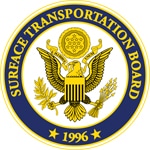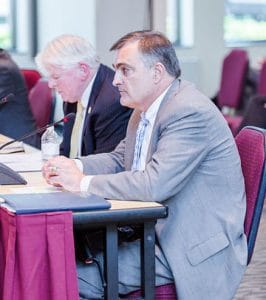CLEVELAND, Ohio (Jan. 13, 2021) — The leaders of two of the nation’s largest railroad worker unions urgently petitioned the Department of Homeland Security (DHS) in a letter Jan. 13 to enact a “No-Ride List” on passenger rail carriers after the deadly Jan. 6 insurrection in Washington D.C.
The International Association of Sheet Metal, Air, Rail and Transportation Workers — Transportation Division (SMART-TD) and the Brotherhood of Locomotive Engineers and Trainmen (BLET) demanded that the DHS take immediate executive action to tighten passenger rail security in line with aviation security overseen by the Federal Aviation Administration (FAA).
“Even as of this hour, the only real requirement for a person to board a train is simply to have a ticket; nothing more, nothing less. There is no screening process. There is no TSA. And there are no significant statutes or regulations to penalize those willing to interfere with a train’s crew or to do harm on a train, especially not when compared to the airline industry,” Presidents Jeremy R. Ferguson of SMART-TD and Dennis R. Pierce of the BLET said in their emergency order request.
SMART-TD and BLET urge that DHS implement a “No-Ride List” that mirrors FAA’s No Fly List immediately by expanding 49 U.S.C. §114(h) to include the Federal Railroad Administration (FRA) and passenger rail carriers.
“By granting an extension of the statute and giving access to the FRA and rail carriers, there will be, at minimum, a line of protection against those known to pose a threat from utilizing rail to manipulate the country’s transportation system, and it will mitigate against unwanted, aggressive interaction or attacks on train crews,” the presidents wrote.
The petition to DHS for an emergency order follows a similar petition sent Jan. 11 to FRA urging it to act to prevent security vulnerabilities and to protect those who ride — as well as the essential workers who operate — passenger rail service in and around the nation.
Read the Emergency Order Request (PDF).
# # #
The SMART Transportation Division is comprised of approximately 125,000 active and retired members of the former United Transportation Union, who work in a variety of different crafts, including as bus and commuter rail operators, in the transportation industry.
The Brotherhood of Locomotive Engineers and Trainmen represents nearly 58,000 professional locomotive engineers and trainmen throughout the United States. The BLET is the founding member of the Rail Conference, International Brotherhood of Teamsters.
 The Surface Transportation Board released two decisions related to its oversight of Amtrak’s operations under the Passenger Rail Investment and Improvement Act of 2008 (PRIIA).
The Surface Transportation Board released two decisions related to its oversight of Amtrak’s operations under the Passenger Rail Investment and Improvement Act of 2008 (PRIIA).



 CINCINNATI — The Federal Railroad Administration will soon take a good, hard look at how Amtrak could better serve the Midwest with interstate passenger rail transit, and local leaders are saying it will take Cincinnati one step closer toward daily rail service to Chicago.
CINCINNATI — The Federal Railroad Administration will soon take a good, hard look at how Amtrak could better serve the Midwest with interstate passenger rail transit, and local leaders are saying it will take Cincinnati one step closer toward daily rail service to Chicago.